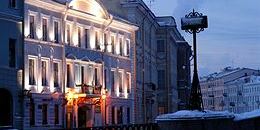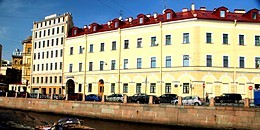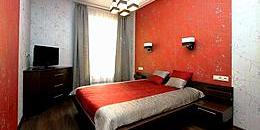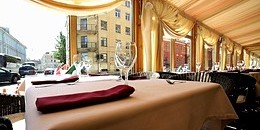Monument to Alexander III
On May 23, 1909 the controversial monument to Alexander III was opened in the center of present day Ploshchad Vosstaniya. It depicted a very stout bronze figure of the counter-reformist and unpopular Russian Tsar combined with a very heavy horse on a pedestal. The monument was hardly opened when it caused an intense public scandal. Petersburg society was divided. The more reactionary part of society was indignant. They said the caricature of the Tsar was too open. However, democratic society welcomed the powerful and exposing monumental sculpture. In fact, the debate even reached the city Duma, which seriously reviewed the question of the right of the statue's existence. Only the author of the monument Paolo Trubetskoy remained unflappable and said, "I do not engage in politics. I simply portrayed one animal for another."

In St. Petersburg there were rumors that the monument to Alexander III would be erected in the Urals, high in mountains on the border between Asia and Europe. This was explained by the massive figure of the horseman and his pony, and their continuity with the land. Designers of the monument planned to have people look up at the monument from below, from a great distance, for example from windows of a dashing train to conceal the heavy weight of the Tsar and completely take in the sculpture.
The monument was ostracized in February 1917. Critics of the monument labeled it everything from "scarecrow" and "bureau" to "brute" and other uncomplimentary names. The monument seemed to be a riddle whose answer brought incredible joy to the street's masses. Several popular riddles of the day underscored the unpopular and uncomplimentary view of the Tsar.
Moreover, the controversial production of monumental sculpture suffered an unfriendly fate. In 1937 it was removed from Ploshchad Vosstaniya and placed in an interior court yard of the Russian museum where it was ostensibly separated from the city. According to popular folklore of the day, the monument became "the prisoner of the Russian museum."

At that time in Leningrad there was a popular belief that the well-being, honor and merit of the city were guarded by the three horsemen: the Peter the Great monument on Senatskaya Ploshchad, the Nicholas I monument on Isaakievskaya Ploshchad and the Alexander III monument on Ploshchad Vosstaniya. The fact that one of these guardians of the city was removed from its historical home in 1937 was seen as a sign of imminent misfortune.
The official reason for the monument being removed was that it apparently obstructed the trams which went along Nevsky Prospekt even though the trams had been moving along Nevsky Prospekt without incident for more than 30 years prior.
Many considered that one of the first real victories for democratic society in post-communist Leningrad was the "liberation" of the monument to Alexander III from behind the tracery of fences of the Russian Museum. The monument was moved to the yard near the entry of the Marble Palace where not long ago on a low pedestal stood Lenin's famous political rallying armored car. At the time, city authorities said that this was only a temporary site for the monument. However, it is very unlikely that the monument would ever be moved back to its historic home on Ploshchad Vosstaniya in front of the Moscow Train Station because that area is now home to the Hero City Leningrad obelisk.










